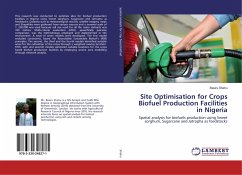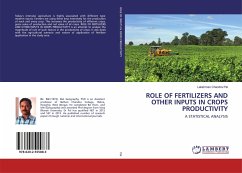This research was conducted to optimize sites for biofuel production facilities in Nigeria using Sweet sorghum, Sugarcane and Jatropha as feedstocks. Datasets such as meteorological records, satellite imagery, maps and Shapefiles were gathered from various sources and a nominal scale of 1: 250,000 was used because cell size used for all the raster datasets was 100 metres. Multi-criteria evaluation (MCE), spaecifically pairwise comparison, was the methodology employed and implemented in GIS environment. A total of seven models were developed. The first model excluded constraints, based the Roundtable Sustainable Biofuel's (RSB) principles. The second, the third and the fourth models identified suitable areas for the cultivation of the crops through a weighted overlay function. Fifth, sixth and seventh models optimized suitable locations for the crops based biofuel production facilities by employing service area modelling through network analysis.
Bitte wählen Sie Ihr Anliegen aus.
Rechnungen
Retourenschein anfordern
Bestellstatus
Storno








